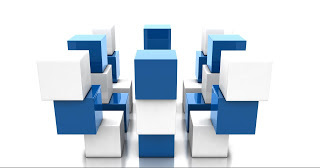Digital Organizational Design vs. Business Changeability
 Digital makes a significant impact on every aspect of the business both horizontally and vertically. The very characteristics of digital is the increasing speed of change and hyperconnectivity. Forward-looking organizations leverage the latest technologies to fine tune the organizational structure and improve the business changeability. Organization design is the vehicle through which the business strategy is executed and defines the business environment in which the digital organization can reduce the change friction, improve the business adaptability, and unleash its full potential.
Digital makes a significant impact on every aspect of the business both horizontally and vertically. The very characteristics of digital is the increasing speed of change and hyperconnectivity. Forward-looking organizations leverage the latest technologies to fine tune the organizational structure and improve the business changeability. Organization design is the vehicle through which the business strategy is executed and defines the business environment in which the digital organization can reduce the change friction, improve the business adaptability, and unleash its full potential.
Digital workplace is fluid, live, informative, creative and productive, flatter structures will help to speed up organizational response to changes: The goal for optimized organizational design is to get the cross-functional communication, mass collaboration, bold innovation through less hierarchy, cross-functional collaboration. So large groups of people can interact and be able to divide and conquer a complex challenge to accelerate the solution in forming collective capabilities. The workplace needs to be designed to help employees at all levels within an organization, from top leaders to front-line employees, understand and develop their creative capacity to solve problems and exploit opportunities in new and innovative ways. Everyone has a valuable contribution to make at whatever level in the formal hierarchy they happen to be placed, and adopt the robust processes designed for improving responsiveness and harnessing communication, and improve business efficiency via reducing process redundancy or resource wastes. Organization structure and its impact on efficiency could play either positive or negative impact. The bottom line is how well the organizational structure is being influenced by factors such as communication effectiveness, information fluidity, customer centricity, etc. Limited hierarchy works best in a creative environment where the free flow of ideas and their prompt implementation is a key element of success.
Digital organizations have to adapt to the continuous changes via self-adaptability, self-renewal, and maintain the digital balance: The self-adaptive system is a system able to re-configure its own structure and change its own behavior during the execution of its adaptation to environment changes. Self-adaptation is faster if made with the full involvement of people in organizational change, without just making "big plans" or "blueprint,” but starting from relations between people. It is possible to see what enables a self-adaptive organism is an information-driven process and the capability to sustain it. It is important to turn organizational “theories” into tangible management processes that use “relations between people” as the loom on which to create management structures and processes that support self-adaptive problem-solving and build “recombinant” business capabilities. The challenge for organizations is to manage its portfolio of relevant cross-border strategic synergies and organizational interdependence with the appropriate mix of enabling organizational elements, engaging digital talent and balancing effectiveness and efficiency. Or to put simply, maintain the right level of digital balance. In fact, maintaining the digital balance is a never-ending business life-cycle.
 Digital organizations need to continually fine-tune a successful structure for improving people-centricity: Digital blurs the functional, organizational, and even industrial borders nowadays. Traditional hierarchical lines will phase out and a collective of business partners will emerge working collaboratively to set strategy and achieve organizational goals. The challenge for any business is to find a successful structure that helps to empower people, enforce iterative communication, and harness cross-functional collaboration to deliver better business results and unleash the full digital potential of the organization. New generations of digital technologies such as social platform or other collaboration tools are enabling not only the structured processes of the past but also the unstructured processes of the digital enterprise.Because digital technology is highly powerful but nimble and lightweight, as the “superglue” to weave all necessary business elements into the building blocks of business capability and highlight the characteristics of “Changeable Organization.”
Digital organizations need to continually fine-tune a successful structure for improving people-centricity: Digital blurs the functional, organizational, and even industrial borders nowadays. Traditional hierarchical lines will phase out and a collective of business partners will emerge working collaboratively to set strategy and achieve organizational goals. The challenge for any business is to find a successful structure that helps to empower people, enforce iterative communication, and harness cross-functional collaboration to deliver better business results and unleash the full digital potential of the organization. New generations of digital technologies such as social platform or other collaboration tools are enabling not only the structured processes of the past but also the unstructured processes of the digital enterprise.Because digital technology is highly powerful but nimble and lightweight, as the “superglue” to weave all necessary business elements into the building blocks of business capability and highlight the characteristics of “Changeable Organization.”
Organizations need to have an in-depth understanding of gains and pains of organizational design and development. Very few of organizations understand all the gains they will enjoy from such initiatives in their organizations. Gains in profitability, changeability, new learning, business growth, and innovation. Digital transformation won’t happen overnight, and organizational structure optimization takes planning, experimenting and scaling up. But it is the journey worthy the effort to improve the business’s performance and maturity.
Follow us at: @Pearl_Zhu
Published on April 27, 2017 22:54
No comments have been added yet.



